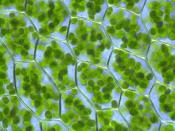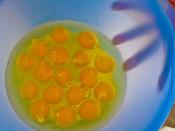Dr Lynn Margulis, a biologist from Boston University, proposed in the 1960's, the theory of endosymbiosis. It was then officially published in her book "Symbiosis in Cell Evolution". The theory suggests that cells originated as communities of interacting entities a could join together in a specific order. Organelles like mitochondria and chloroplasts were themselves prokaryotic cells before the development of eukaryotic cells. It was believed that a host cell, probably similar to amoeba, ingested a smaller cell by phagocytes. They ingested in a way that the host cells are unable to digest them and they were allowed to survive. Also, the DNA of the ingested cell would be coded into the host cell which causes subsequent generations they could also contain the ingested cell. Margulis also predicted if the organelles were really prokaryotic symbionts, they should have their own DNA and also should resemble that of bacteria and different from the host's DNA.
Mitochondria as aerobic bacteria, chloroplasts as cyanobacteria...
For mitochondria, they previously were like aerobic bacteria and this takes place in an oxygenated environment. The host cell respires anaerobically ingested a cell which respires aerobically. Since more ATP could be produced by aerobic respiration, the host cell could now be provided with more ATP and in return, provide nutrients like glucose to the ingested cell. Similar for chloroplast, they were previously like cyanobacteria. They were ingested by an aerobic host, after being ingested, they continue to photosynthesise. As a result, they provide the host with oxygen and food like glucose and the host would provide the cells with carbon dioxide and nitrogen which are reactants for photosynthesis.
This mutualistic interaction between the host and the ingested cell then became an obligatory symbiosis as the two sides lost some of their abilities to function without another. Eukaryotic cells...


